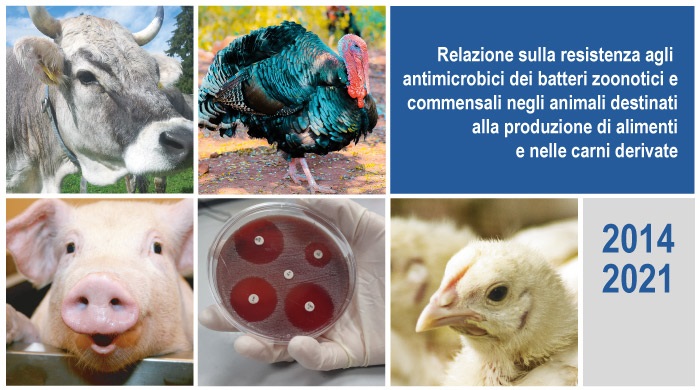Published the Report on antimicrobial resistance of zoonotic and commensal bacteria in food-producing animals and derived meat (2014-2021),
The report, in line with the objectives defined in the National Plan to combat antibiotic resistance (PNCAR) 2022-2025, is the result of the collaboration between the Ministry of Health and the National Reference Center for Antibiotic Resistance e National Reference Laboratory for Antimicrobial Resistance (CRN-NRL-AR) of the Experimental Zooprophylactic Institute of Lazio and Tuscany.
In the Italian veterinary sector, antibiotic resistance monitoring has been implemented since 2014 on the basis of Decision 2013/652/EU, later replaced by Decision (EU) 2020/1729. In accordance with this legislation, the Ministry of Health (General Directorate of Animal Health and Veterinary Medicines and General Directorate for Food Hygiene and Safety and Nutrition), in collaboration with the CRN-NRL-AR, annually issues a National Monitoring Plan on antimicrobial resistance (AMR Plan), which involves the execution of antibiotic sensitivity tests on bacterial isolates from representative samples (intestinal contents and fresh meat) of the national population of broilers and turkeys for fattening in even years (2014-2016-2018-2020), and of fattening pigs and cattle under 12 months of age in odd years (2015-2017-2019-2021).
The report, in presenting the data collected starting from the first year of implementation of the AMR Plan, highlights the temporal trend of antibiotic resistance, the results achieved as a consequence of the measures implemented in the veterinary sector to combat the phenomenon and recalls attention to some problems that are still present and/or emerging.
Furthermore, the data should be read in conjunction with the sales data of veterinary medicines containing antibiotic substances.
